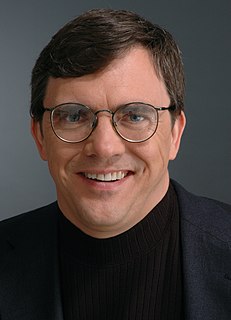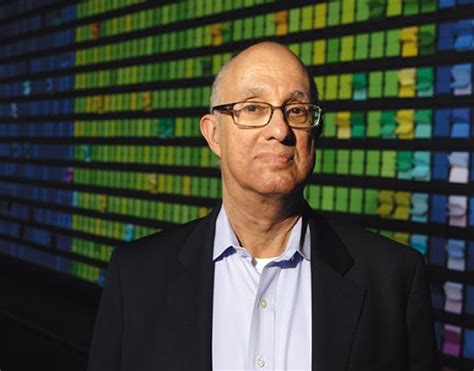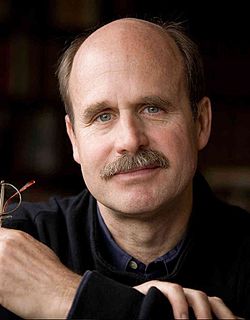Top 112 Quotes & Sayings by Clayton Christensen - Page 2
Explore popular quotes and sayings by an American professor Clayton Christensen.
Last updated on April 22, 2025.
One reason there are so many short-lived management fads is that their prescriptions were derived and advocated in precisely this way. So managers read about a fad and try it, find that it doesn't work, abandon the effort, and move on to the next thing. In reality, it is usually the case that the faddish prescription was indeed sound advice in certain circumstances, but actually was poor advice in other circumstances.
At the beginning of almost every industry, the available products and services are so expensive to own and complicated to use that only people with a lot of money and a lot of skill have access to them. A disruptive technology is an innovation that simplifies the product and makes it so affordable that a whole new population of people can now have one and use it at the beginning for simple applications, and then it improves to the point that it makes the old technology obsolete.
Because these firms listened to their customers, invested aggressively in new technologies that would provide their customers more and better products of the sort they wanted, and because they carefully studied market trends and systematically allocated investment capital to innovations that promised the best returns, they lost their positions of leadership.
There are other dimensions of biotechnology. If you think of biotechnology like the Internet, it's not a category - it's an infrastructure that can be deployed to sustain or disrupt. In health care, the most complex problems at the high end have to be dealt with in a problem-solving mode by the best, most experienced physicians you can find.
The important thing is that over time, scientific progress transforms things that used to have to be dealt with in a problem-solving mode down to the pattern-recognition space; and from pattern recognition into the rules-based mode. This is the mechanism by which less-trained people are enabled to do more sophisticated things. This is always the way disruption happens. It enables a larger population of less-experienced people to do more sophisticated things.
I don't view it as mystic. I believe that God is our father. He created us. He is powerful because he knows everything. Therefore everything I learn that is true makes me more like my father in heaven. When science seems to contradict religion, then one, the other, or both are wrong, or incomplete. Truth is not incompatible with itself. When I benefit from science it's actually not correct for me to say it resulted from science and not from God. They work in concert.
It is when the product is not good enough that proprietary integration gives you a competitive edge. You cannot outsource and be competitively successful in this situation. But at the other end, where standard components assembled in standard ways can yield acceptable performance, you must outsource.
It's like in biological evolution: The population will evolve, even though individuals can't. The same thing happens in the corporate world: The population of business units within corporations evolves, even though individual business units can't. That's because the capabilities of business units reside in their processes and their values, and by their very nature, processes and values are inflexible and meant not to change.
We are all trained to be data driven people, but no hard data exist about the future. Therefore, the only way to look into the future with any degree of accuracy is to use theory, statements of what causes what and why. If executives have the right theories in their heads, they can very quickly interpret market developments. They can identify what matters and why, and act accordingly. So we suggest decision-makers should start by gaining a deep understanding of the relevant collection of theories, and then be alert for signals that indicate certain types of developments.
Year after year after year, people write books about managing innovation or about leadership, for example, without ever going through the pain of saying, "This kind of leadership will cause this result in these circumstances and a very different result in those circumstances." This is academic malpractice of the worst kind.
The personal computer was a disruptive innovation relative to the mainframe because it enabled even a poor fool like me to have a computer and use it, and it was enabled by the development of the micro processor. The micro processor made it so simple to design and build a computer that IB could throw in together in a garage. And so, you have that simplifying technology as a part of every disruptive innovation. It then becomes an innovation when the technology is embedded in a different business model that can take the simplified solution to the market in a cost-effective way.
In general, the questions that are on our mind are the same questions that have been driving our work over the past decade. How do we bring order to this messy, unpredictable world of innovation? How can we dramatically improve the chances of creating a successful new-growth business? How can we do this again and again? More specifically, it has become very clear that the fundamental paradigms of market segmentation and branding are badly broken - and we're working on developing more useful theories for these dimensions of innovation.
In my first career I had founded my own company, with a group of MIT professors, before coming to Harvard to finish my doctorate, and so I had a deep respect for the brains, talent, and dedication of managers. That made it hard for me to believe the attributions in the business press that stupid management was to blame. So I looked elsewhere for an explanation.
Generally, the technology that enables disruption is developed in the companies that are the practitioners of the original technology. That's where the understanding of the technology first comes together. They usually can't commercialize the technology because they have to couple it with the business model innovation, and because they tend to try to take all of their technologies to market through their original business model, somebody else just picks up the technology and changes the world through the business model innovation.
How could Digital's collapse be so precipitous? It's because, in many ways, financial performance data is misleading. As you move up to the top of the market, you're getting rid of the less profitable products at the low end and adding business with more attractive margins at the high end. The rate of unit volume growth might be tapering off as you pursue these smaller markets, but your margins actually look better. So Wall Street rewards your stock price until you hit the ceiling.
Every disruptive innovation is powered by a simplifying technology, and then the technology has to get embedded in a different kind of a business model. The first two decades of digital computing were characterized by the huge mainframe computers that filled a whole room, and they had to be operated by PhD Computer Scientists. It took the engineers at IBM about four years to design these mainframe computers because there were no rules. It was an intuitive art and just by trial and error and experimentation they would evolve to a computer that worked.
To prop up the stock price, managers have to turn down the screws on everybody. That forces them to cancel all the projects that would lead to future growth in order to drop money to the bottom line. This is HP's dilemma today. Once a company's growth has stopped, the game as we have known it is over. It's a scary thing.
Quite often startups were first out of the gate with a sustaining technology. But somehow the leaders got the technology and stayed atop their industries. Sometimes they acquired the startup; sometimes they just developed the technology as a follower and used their muscle and mass to win. But they always won.
Often they [writers on the study of management] have a point of view based upon intuition and experience. They then offer a cadence of two-paragraph examples carefully selected to "prove" their theory, and then they write "one size fits all" books. The message is, "If you'd do what these companies did, you'd be successful too."
History is littered with great firms that got killed by disruption. Of course, the personal computer, a technology that first took root as a toy, got Digital Equipment Corporation. Kodak missed the boat for a long time on digital imaging. Sony was slow to get MP3 technology. Microsoft doesn't know what to do with open source software. And so on.
When the functionality of a product or service overshoots what customers can use, it changes the way companies have to compete. When the product isn't yet good enough, the way you compete is by making better products. In order to make better products, the architecture of the product has to be interdependent and proprietary in character.
In the first stage of insight-building, all that researchers can do is observe phenomena. Second, they classify the phenomena in a way that helps them simplify the apparent complexities of the world so they can ignore the meaningless differences and draw connections between the things that really seem to matter. Third, based on the classification system, they propose a theory. The theory is a statement of what causes what and why, and under what circumstances.



















